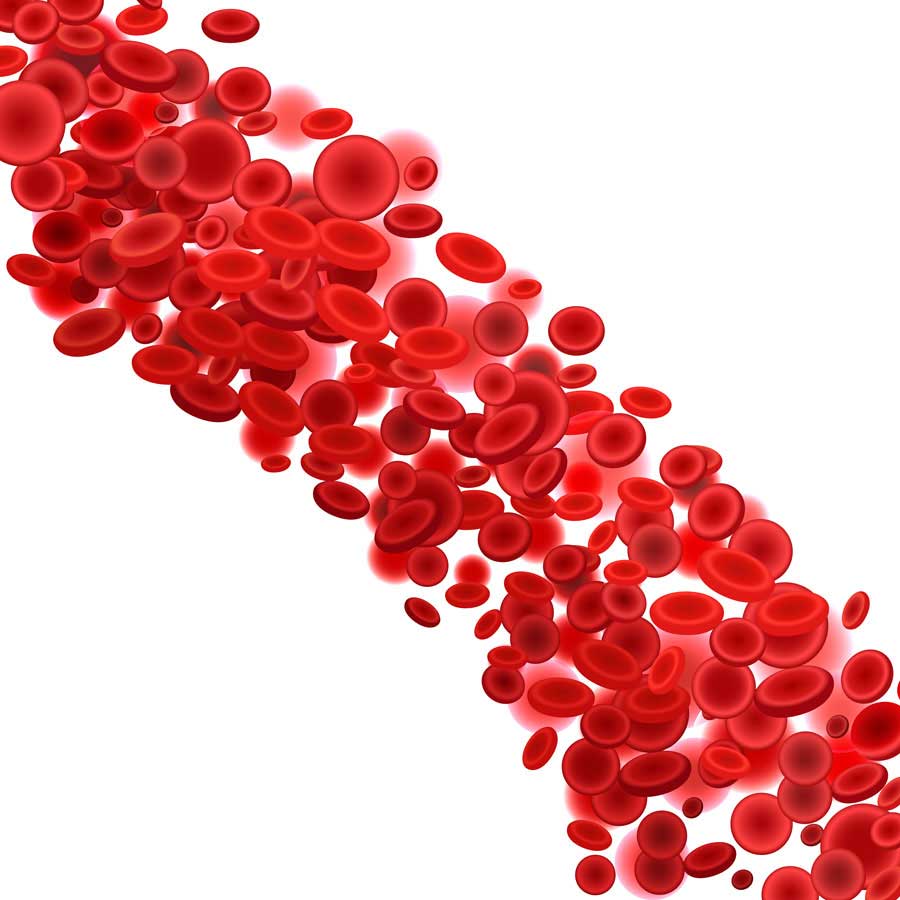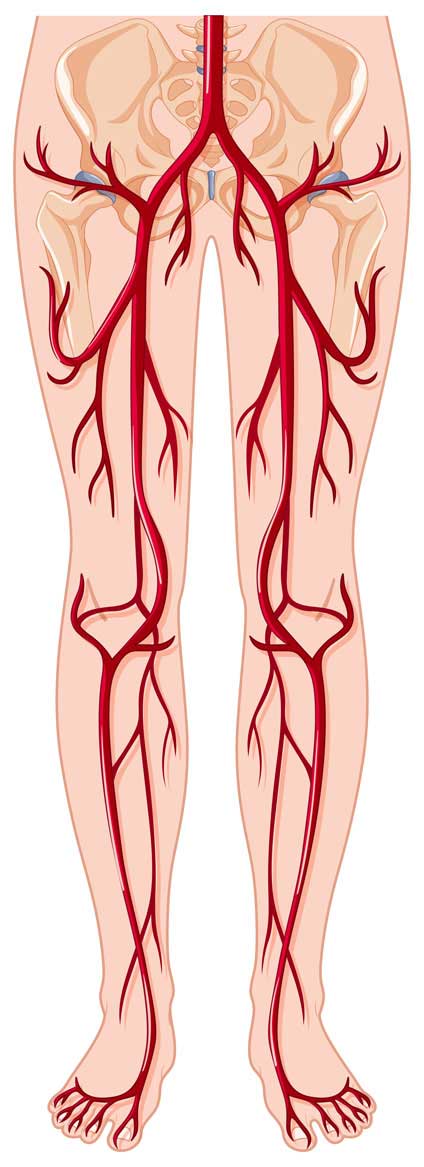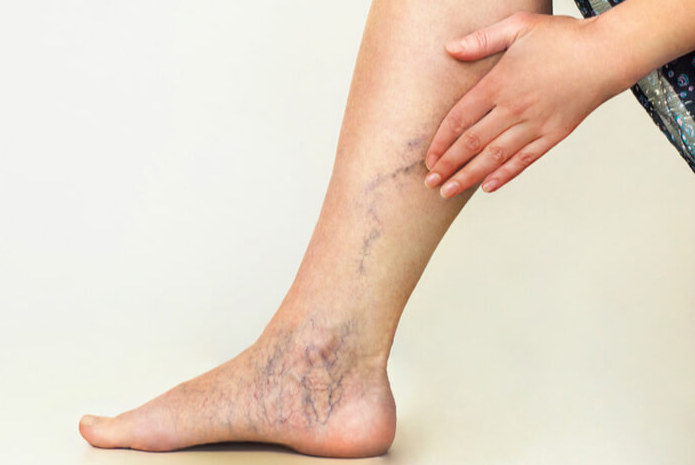WHAT ARE THE VASCULAR DISEASE SYMPTOMS?
Vascular sickness is any condition that impacts the network of your blood vessels. Tube-shaped structure sickness includes any circumstance that influences your cardiovascular system, like peripheral artery disorder.
Symptoms are changes within the skin, as well as attenuated skin temperature, or thin, brittle, shiny skin on the legs and feet. Tube-shaped structure sickness is any odd condition of the blood vessels (arteries and veins).The body makes use of blood vessels to flow into blood through itself. Problems in this massive network can lead to extreme incapacity and death.
EXAMPLES OF VASCULAR SICKNESS:
The tube-shaped structure diseases are stroke, peripheral artery disorder (PAD), abdomen aneurysm (AAA), arteria carotis complaint (CAD),blood vessel malformation (AVM), essential limb-threatening ischaemia (CLTI), embolism (blood clots), deep vein occlusion (DVT), chronic blood vessel insufficiency (CVI).
SIGNS OF VASCULAR DISEASE:
- Wounds which may not heal over strain points, consisting of heels or ankles
- Numbness, weakness, or heaviness in muscular tissues
- Burning or aching pain at relaxation, usually within the toes
- Restricted quality
- Thickened, opaque toenails
- Varicose veins
 VASCULAR DISEASE SYMPTOMS:
VASCULAR DISEASE SYMPTOMS:
- Pale or bluish skin
- Lack of leg hair or toenail increase
- Sores on feet, toes, or legs that heal slowly or never
- Decreased pores and skin temperature, or skinny, brittle, vibrant skin on the legs
- Weak pulses in the legs and the feet
- Gangrene
VASCULAR DISEASE TYPES:
- Aneurysm
- Atherosclerosis and peripheral artery disease
- Blood clots in veins (VTE)
- Blood clotting disorders
- Buerger’s disease
- Lymphedema
- Peripheral venous disease and varicose veins
- Raynaud’s phenomenon (Raynaud’s disease or Raynaud’s syndrome)
THE FOLLOWING ARE CONDITIONS THAT FALL UNDER THE CATEGORY OF “VASCULAR DISEASE”:-
Arterial Disease
Like the blood vessels of the coronary heart (coronary arteries), your peripheral arteries (blood vessels outside your heart) additionally may additionally increase arteriosclerosis, the construct-up of fats and cholesterol deposits, known as plaque, at the inside partitions. Over time, the construct-up narrows the artery.
Types of peripheral arterial sickness include:
- Peripheral artery ailment
- Intestinal ischemic syndrome
- Renal artery disorder
- Popliteal Entrapment Syndrome
- Raynaud’s Phenomenon
 Venous Disease:
Venous Disease:
Veins are flexible tubes with internal flaps to control the blood flow. When valves open, then blood moves via veins. Once your muscle groups relax, the valves shut off, keeping blood flowing in one direction via the veins. The veins bulge and appear as ropes beneath the pores and skin. Unhealthy veins are bulging, swollen, pink, ropy veins, seen merely at a lower place in your skin, ensuing from broken valves among the veins.
Blood Clots
When a blood clot forms in a blood vessel, it may dislodge and travel through the bloodstream, inflicting a deep vein occlusion, pneumonic embolism, heart attack or stroke. Blood clots among the arteries will increase the danger for stroke, heart attack, extreme leg pain, hassle taking walks,or even the shortage of a limb.
Aortic Aneurysm
An aneurysm is a standard bulge within the wall of a blood vessel. Aneurysms can form in any vessel, but they occur most commonly among the artery.
Fibromuscular Dysplasia (FMD)
Patients with FMD have uncommon cellular growth within the walls of their medium and big arteries. This could cause the arteries to look strange & beaded. It most commonly affects the renal and carotid arteries.
Other vascular conditions consist of:
Blood Clotting Disorders
Blood clotting problems are issues that make the blood much more likely to form blood clots within the arteries and veins.
Lymphedema
The lymphatic system protects your body from foreign particles like microorganisms, venom, allergies etc. It also causes the abnormal build-up of fluid that causes swelling, most typically within the hands or legs.
A circulatory condition wherein narrowed blood vessels reduce blood waft to the limbs. Peripheral vascular ailment is an indication of fatty deposits and calcium obstructing the insides of the arteries (atherosclerosis). Risk factors consist of aging, diabetes and smoking.
Symptoms may encompass leg pain, specifically when walking.
Reduction in Tobacco use, workouts and a healthy diet are the best treatments. When those modifications aren’t enough, surgical operation can help.
Peripheral vascular disease (PVD) is a condition that affects the blood vessels that supply blood to your legs and feet. It occurs due to narrowing of the arteries in the legs.
VASCULAR DISEASE CAUSES AND RISK FACTORS:
You are more likely to have vascular disease as you get older. Other factors that make vascular disease more likely include:
- Lorem ipsum dolor sit amet, consectetur adipiscing elit. Ut elit tellus, luctus nec ullamcorper mattis, pulvinar dapibus leo.
- Family history of vascular or heart diseases
- Hypertension
- High cholesterol
- Diabetes
- Smoking
- Pregnancy
- Illness or injury
- Long periods of sitting or standing
- Obesity
- Blood clotting disorders
 Among the most common diagnostic tools is:
Among the most common diagnostic tools is:
Ankle-brachial index check (ABI) for peripheral vascular disorder –
The ankle-brachial index is a non- invasive test completed using a Doppler machine to test for blood glide through the legs. The test compares blood strain measurements in the ankle and the arm.
Vascular diseases range from problems along with your arteries, veins, and vessels that deliver lymph to disorders that have an effect on how your blood flows. A disorder can imply your tissues are not getting sufficient blood, a condition known as ischemia, as well as other severe, even existence-threatening, problems.
VASCULAR DISEASE CAUSES CAN INCLUDE:
- Atherosclerosis, the buildup of plaque in your arteries
- Blockage in your blood vessel by a mass of debris (embolus) or blood clot (thrombus)
- Inflammation, called vasculitis
- Trauma or injury
VASCULAR DISEASE TREATMENT:
You can often treat vascular disease with lifestyle changes, such as:
- A healthy diet to help lower your blood sugar or cholesterol
- Exercise
- Quitting tobacco
- Stress management
You may also need medication, including:
- Blood pressure drugs
- Cholesterol medication
- Drugs to prevent blood clots
If you or anyone you know is suffering from Vascular Disease, our expert providers at Specialty Care Clinics will take care of your health and help you recover.
Call on469-545-9983 or fill in the below form to book an appointment with Dr. Ahsan Ali.
